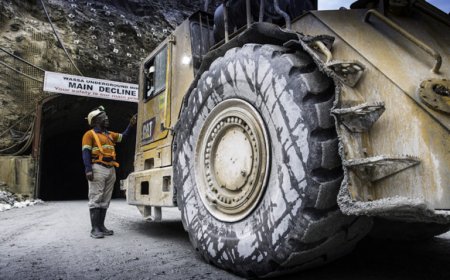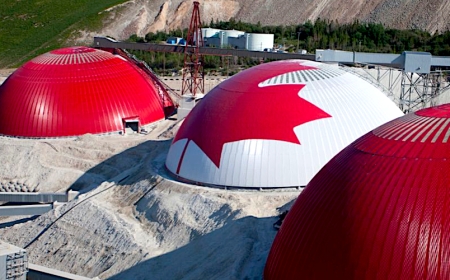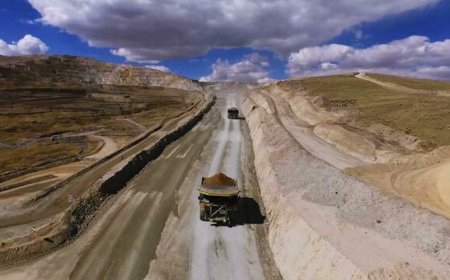Site visit: Allegiant Gold’s Eastside project shows promise
Allegiant Gold (TSXV: AUAU; US-OTCQX: AUXXF) is determined to move the needle forward at its Eastside project in the highly prospective Walker Lane Trend of Nevada this summer to build critical mass.


Under CEO Peter Gianulis’s leadership, the Vancouver-based company plans to undertake drilling at its flagship project, 35 km west of the mining town of Tonopah and about a three-hour drive north of Las Vegas, to make the project more relevant on the regional size scale.
“Our goal continues to be the same; the efficient allocation of capital directly into the ground while we seek to expand our existing resources and make discoveries,” said Gianulis during a recent site visit.
With a focus on its four main projects, the company has allocated a budget for 15,115 metres of reverse circulation drilling and diamond core drilling this year to see whether it can position the asset for sale or as development-ready.
According to Gianulis, Eastside was discovered in 2013, and subsequent drilling in 2016 confirmed its potential, leading to the establishment of Allegiant Gold in 2017. During this transition, Allegiant emerged as an independent player when Columbus Gold was divided into two entities. Gianulis, who sits on the board of both companies, spearheads Allegiant Gold’s vision for success.
Since assuming the role of CEO in 2019, Gianulis has directed significant resources toward exploring Eastside. To further strengthen their team and expedite progress, Allegiant Gold has welcomed Alan Roberts, an expert in geophysics, geology, and mineral exploration, as the Vice President of Exploration. With his background in epithermal deposits and hot spring systems, Roberts brings a wealth of experience to propel Eastside to new heights.
During the visit, Roberts took centre stage, providing insights into the geological marvels that define the project. With extensive knowledge of epithermal deposits and hot spring systems, Roberts has been instrumental in unravelling the complexities of Eastside’s geological composition.
Standing amidst the core of the Eastside site, Roberts highlighted the distinct features that make Eastside highly prospective. The area is characterized by a silicified volcanic conglomerate, potentially indicating an event-breccia or a warmer surface point. Overlaying this conglomerate are obsidian-rich black contacts, creating a visually striking contrast. Roberts also emphasized the presence of numerous volcanic intrusions, punctuating the landscape and underscoring the existence of a dynamic, high-potential hot spring system.
Regarding regional potential, Roberts noted that the mineralization at Eastside is associated with relatively young rhyolite intrusive and volcanic rocks. Unlike typical low sulphidation epithermal deposits, there are indications that the mineralized zones extend vertically over several hundred metres, consistent with other rhyolite-hosted systems in the Walker-Lane structural trend.

Regional potential
Allegiant plans to undertake 4,015 metres of reverse circulation drilling across 11 holes at Eastside this year, targeting resource expansion and exploring new prospects south of the current resource area. Additionally, the program includes 800 metres of diamond drilling across two holes.
Notably, the Castle project, located 10 km south of Eastside, will undergo about 3,500 metres of shallower reverse circulation drilling across 28 holes and 800 metres of diamond drilling across four holes. This initiative aims to expand the existing resource and make discoveries while enhancing their understanding of the structural and gold distribution data.
Covering an expanse of about 80.9 sq. km, Eastside hosts a pit-constrained NI 43-101 inferred resource at the Original Zone in the northern part of the property. The resource remains open to the south, west, and at depth. The inferred resource comprises 61.73 million tonnes grading 0.55 grams gold per tonne, with a cut-off of 0.15 grams per tonne, amounting to 1.09 million ounces. Additionally, the resource contains an average of 4.4 grams silver per tonne, totalling 8.7 million ounces.
Moreover, Eastside boasts a historical resource at the Castle Zone on the property’s southern boundary. This resource includes 19.99 million tonnes grading 0.49 grams gold, equivalent to 314,000 oz. of metal.
Management believes that the most comparable deposit currently being mined is Equinox Gold’s (TSX: EQX; NYSE: EQX) Castle Mountain mine next door in California. Eastside also bears some similarities to the Las Crucitas project in Costa Rica.
Roberts further explained the structural aspects of Eastside, shedding light on a left-lateral fault system that characterizes the region. Through meticulous mapping and analysis, he has uncovered a ‘rotational left-lateral strike-slip system,’ which has led to the formation of an intricate network of veins within the 700-metre-long north-south block of Eastside.
This sheeted epithermal vein complex exhibits a low-grade stockwork halo surrounding high-grade veins, providing a tantalizing glimpse into the untapped mineral wealth that lies within.
What sets Eastside apart is the absence of historical mining operations despite its geological richness. Roberts explains that the topography and geological peculiarities have rendered surface mining impractical. However, by identifying the intact block hosting mineralization, Allegiant is poised to unlock the project’s full potential.
Growing resources
The primary goal of the 2023 exploration and drilling program, which includes reverse circulation and diamond core drilling, is to expand the existing resource in the South Eastside area. The company also plans to rename the northern area, currently known as the Original Pit Zone or Eastside Resource, as the North Eastside resource.
While South Eastside (Castle Zone) has not been adequately drilled to define a resource, historic drilling indicates the potential for low-grade mineralization nearer to the surface, with high-grade zones.
Another objective of Allegiant’s 2023 program is to gain insights into the distribution of gold and silver mineralization, particularly in high-grade areas, by studying lithology, structure, and alteration. Roberts states, “A better understanding of these controls will enable more accurate targeting of zones with potentially high-grade gold-silver mineralization.”
While the 2022 core drilling program made progress in identifying some of these controls, further drilling is necessary to establish definitive conclusions. Geochemical and structural mapping, analysis, 3-D modelling in Leapfrog, and resource estimation and planning in MineSight are assisting in achieving this goal.
The company remains aware of the challenges ahead as Allegiant continues permitting and further exploration. The post-mineral fault system, particularly the Mina deflection of the San Andreas fault intersecting the area, presents an engineering hurdle to overcome.
From a marketing perspective, the company is still determining which of its assets is most prospective. Management is deliberating whether to allocate significant exploration drilling to expand the Eastside resource to help get it to that critical mass definition or focus on the Castle brownfields openpit, which may offer more easily accessible opportunities for starters, but which development could trigger reclamation obligations. Gianulis affirms that the company aims to make an informed decision this year.
Nonetheless, with access to major backer Kinross Gold’s (TSX: K; NYSE: KGC) (holding 9.9%) experts, the team is determined to surmount these obstacles and pave the way for a successful venture.
At 18¢ per share, Allegiant equities are trading at a 42% discount compared with a year ago. It has a market capitalization of $18.5 million.




















